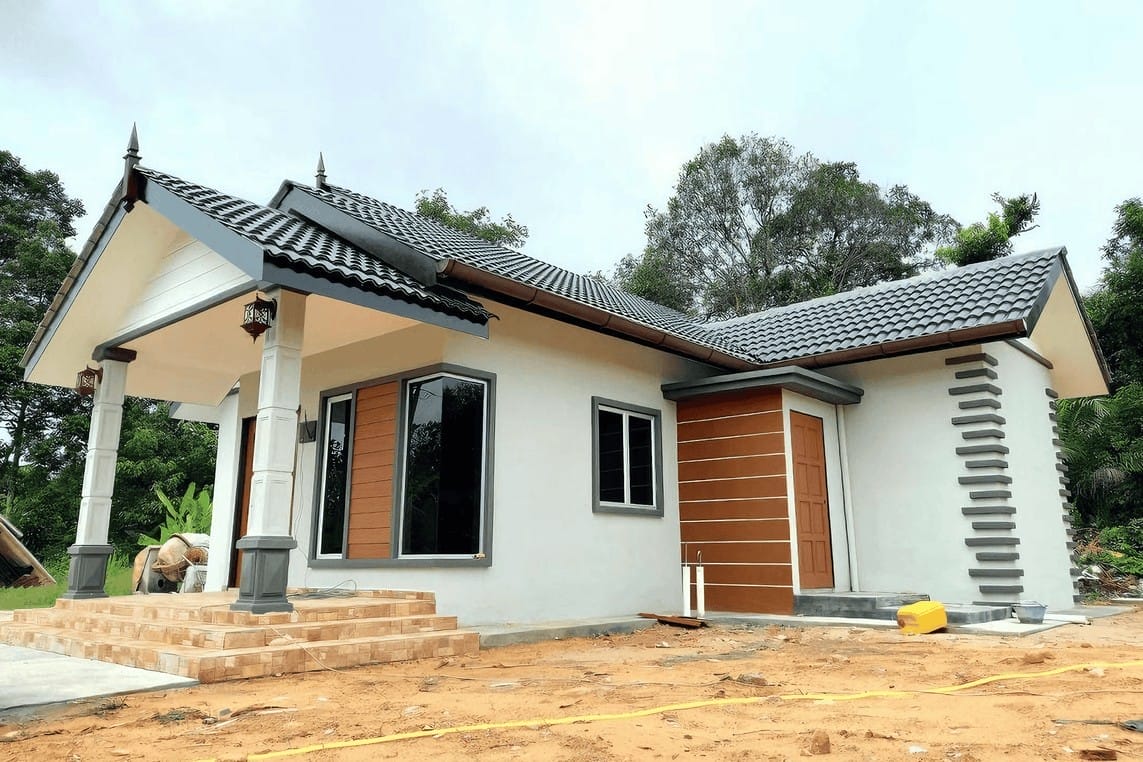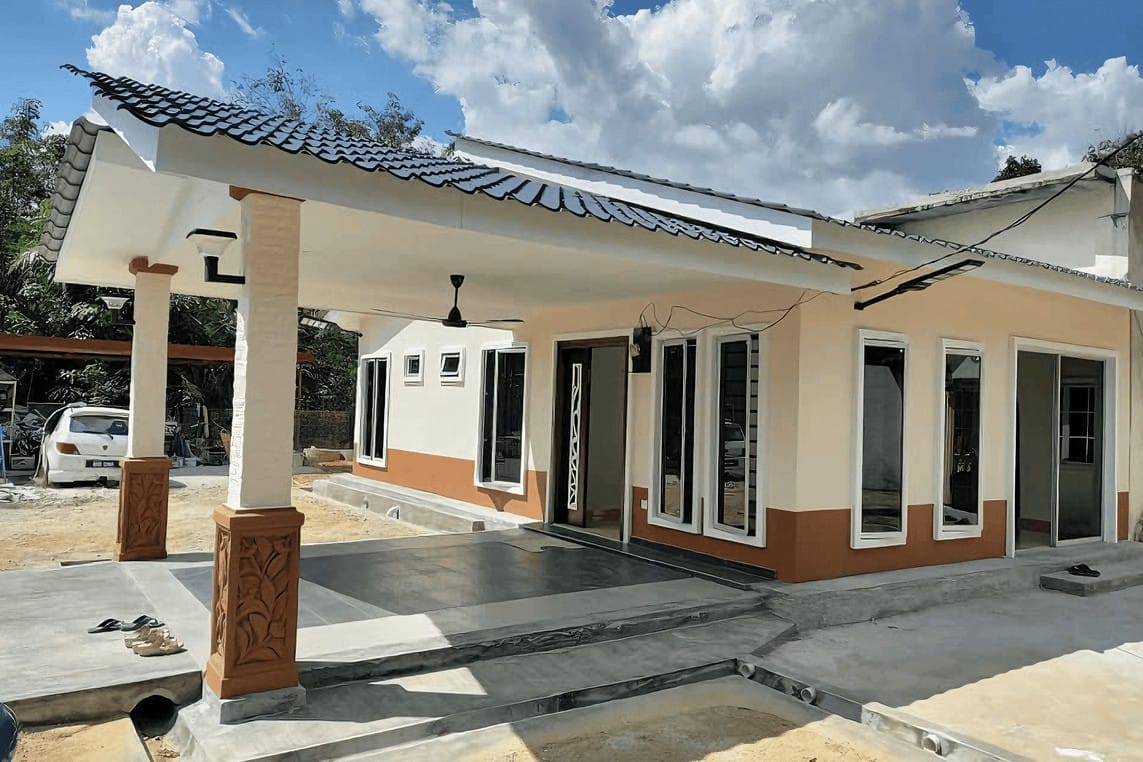7 Payment Schedule Hacks That’ll Keep Your Construction Project on Track | RumahHQ

Hey there! If you’ve ever been involved in a construction project, you know that managing payments can sometimes feel like navigating a maze. Whether it’s a cozy renovation or a grand commercial build, staying on top of your payment schedule is crucial for keeping everything on track. Fortunately, we’ve got your back! In this article, we’ll dive into seven clever payment schedule hacks that can help you avoid the common pitfalls and keep your project running smoothly. Let’s roll up our sleeves and explore some simple yet effective strategies tailored just for you. After all, a well-organized payment plan is the backbone of a successful construction project, and we want you to build your dreams without the hassle. Ready to get started? Let’s go!
Understanding the Importance of a Well-Structured Payment Schedule
A well-structured payment schedule acts as the backbone of a construction project, ensuring everyone involved—from contractors to subcontractors—has a clear roadmap of when payments are due. It doesn’t just keep financial flow smooth; it also helps build trust among stakeholders. By laying down specific milestones and timelines, you’re not just protecting your investment but also motivating teams to stick to their timelines. This transparency can stave off potential conflicts while keeping morale high.
Consider breaking down the payment schedule into specific phases that correlate with the project timeline. These phases can include initial mobilization, completion of major structural work, and final inspection. Having these checkpoints in place allows for focused attention on each project milestone. Here’s a quick look at how you might categorize your payment phases:
| Phase | Milestone Description | Payment Due |
|---|---|---|
| Phase 1 | Site Preparation | 10% of total cost |
| Phase 2 | Foundation Completion | 30% of total cost |
| Phase 3 | Structural Frame In Place | 30% of total cost |
| Phase 4 | Final Inspection/Completion | 30% of total cost |
Furthermore, establishing a payment schedule can help you in cash flow management. It allows you to plan out future expenses and ensures that funds are allocated where they are most needed. Allocate funds wisely to pay for essential materials and labor. By having this foresight, you can mitigate the risks of running out of cash halfway through the project, which can lead to costly delays and misunderstandings.
Identifying Key Milestones to Optimize Cash Flow
When you’re knee-deep in a construction project, keeping an eye on cash flow is vital. One effective strategy is to pinpoint crucial milestones that can serve as triggers for payment releases. These milestones act as checkpoints where you can assess project progress and ensure that all parties are satisfied before funds are handed over. It’s about creating a win-win situation where contractors are motivated to hit targets, and clients feel secure in their investment.
Consider breaking down your project timeline into specific phases, and clearly define what each milestone entails. For example, milestones might include:
- Completion of foundation works
- Finalization of structural framing
- Roof installation
- Rough-ins for electrical and plumbing
- Final inspection and handover
By establishing these milestones with associated payment terms, you can avoid cash flow gaps while also managing expectations better both for your team and your clients. Moreover, having these checkpoints allows for more straightforward conversations around project updates and financial management.
It may also be helpful to create a simple table to visually represent these milestones and associated payment terms. Here’s an example:
| Milestone | Payment Release Percentage |
|---|---|
| Foundation Completion | 20% |
| Structural Framing | 30% |
| Roof Installation | 25% |
| Rough-ins Complete | 15% |
| Final Inspection | 10% |
This kind of structured approach not only ensures you’re optimizing cash flow but also builds trust and accountability across your contractor-client relationships.
Incorporating Contingency Plans for Unexpected Delays
When planning a construction project, it’s crucial to keep in mind that not everything goes as smoothly as a perfectly laid foundation. Sometimes, unexpected delays can pop up—be it due to weather conditions, supply chain disruptions, or sudden changes in labor availability. By crafting a solid contingency plan, you can remain agile and proactive, instead of reactive. This way, you’ll have predefined strategies in place to handle hiccups without losing steam on your schedule.
A proactive approach could involve setting aside a dedicated contingency fund which will help you cover unforeseen expenses. Additionally, you can devise a timeline buffer within your project schedule. This is a little extra time allocated specifically for tackling unplanned events. For instance, you might consider:
- Regularly scheduled check-ins: These can help keep everyone on the same page and identify potential delays early.
- Alternative suppliers: Identify backup vendors beforehand who can step in if your primary suppliers can’t deliver.
- Flexibility in labor: Have a pool of trained workers you can call upon to adjust workforce availability as needed.
A good idea is to maintain a simple table that details what the potential delays could look like, alongside your contingency plans. Keeping this visible can serve as a constant reminder to remain prepared. Here’s an example:
| Potential Delay | Contingency Plan |
|---|---|
| Weather-related delays | Allocate extra days in the schedule for rain or storms. |
| Material shortages | Source secondary suppliers or substitute materials first. |
| Labor shortages | Tap into a temp agency for quick additional workers. |
With these measures in place, you lower the chances of your project derailing due to unexpected twists and turns. This makes for a smoother experience—you stay in control, your team can work confidently, and your project timelines remain as intact as possible. Remember, it’s not about avoiding disruptions entirely, but rather how quickly and effectively you can adapt to them!
Leveraging Technology to Streamline Payment Processes
In the fast-paced world of construction, staying on top of payment schedules is crucial for keeping projects within budget and on time. Today, leveraging technology is a game changer. By utilizing digital platforms and solutions, contractors can automate invoicing and reminders, significantly reducing the risk of late payments that can derail progress. Imagine a world where payment notifications are sent automatically, ensuring that everyone is on the same page without the hassle of chasing down invoices.
Moreover, adopting project management software not only helps in tracking payments but also enhances collaboration among all stakeholders. Tools like cloud-based applications facilitate real-time communication, enabling contractors, subcontractors, and clients to monitor financial updates anytime, anywhere. This increased transparency builds trust and accountability, reducing the potential for misunderstandings. Here’s a quick list of features to look for:
- Centralized Payment Tracking: Keep all your payment records in one place.
- Automated Alerts: Get reminders for due payments.
- Collaboration Tools: Share updates and documents easily.
- Integrated Invoicing: Seamlessly create and send invoices.
Furthermore, using electronic payment systems can streamline the payment process even more. By integrating mobile payment options or online banking, you can make transactions quicker and more efficient, thus reducing paperwork and manual errors. Check out this simple comparison table of traditional versus electronic payment systems:
| Aspect | Traditional Payment | Electronic Payment |
|---|---|---|
| Processing Time | 1-3 days | Instant |
| Cost | Higher fees | Lower fees |
| Record Keeping | Manual tracking | Automated logs |
By embracing these technological advances, you can create a more streamlined payment process that not only keeps your construction project on track but also elevates your business’s professional image. Let technology work for you and drive your projects toward success!
Establishing Clear Communication Channels with Stakeholders
Effective collaboration is the backbone of any successful construction project. This is why prioritizing communication with your stakeholders—from clients to subcontractors—is vital. Start by identifying the most effective channels suited for your team. Some popular methods include:
- Email Updates: Regular updates keep everyone informed, allowing for immediate feedback.
- Messaging Apps: Platforms like WhatsApp or Slack can facilitate real-time discussions.
- Face-to-Face Meetings: Nothing beats a personal touch when addressing complex issues.
Additionally, establishing a communication schedule can go a long way to prevent misunderstandings. Creating a simple timeline or roadmap can serve as a guide for regular check-ins and updates. Here’s a straightforward table you could implement:
| Month | Stakeholder Meeting | Progress Update | Feedback Session |
|---|---|---|---|
| January | Kick-off Meeting | Mid-month Check | End of Month Feedback |
| February | Design Review | Weekly Updates | End of Month Feedback |
| March | Monthly Progress | Bi-weekly Updates | End of Month Feedback |
don’t underestimate the power of clarity in your communication. It’s crucial to convey expectations clearly, so everyone understands their roles and responsibilities. A checklist for stakeholders can help ensure nothing falls through the cracks:
- Define Roles: Make sure everyone knows their duties.
- Set Objectives: Outlining specific goals keeps the project on target.
- Encourage Questions: A culture of asking questions can prevent mistakes.
Negotiating Payment Terms that Benefit All Parties
When it comes to construction projects, the right payment terms can make a significant difference. Start by clearly defining the payment milestones in the contract, detailing when payments should be made in relation to specific project stages. This could include initial deposits, payments upon completing certain tasks, and final settlement once the project is finished. Setting clear milestones helps everyone involved manage their cash flow effectively and avoids misunderstandings down the line.
Communication is essential during the negotiation process. Encourage all parties to express their concerns and needs regarding payment structures. Here are a few tips for a smooth discussion:
- Be Transparent: Share your project timelines and cash flow expectations.
- Listen Actively: Understand what the subcontractors or suppliers require.
- Find Common Ground: Identify payment frequencies that suit all parties.
Additionally, consider incorporating a retention clause that allows you to withhold a small percentage of payment until project completion. This not only incentivizes contractors to maintain quality but also gives you a safety net to ensure everything meets your expectations. Consider creating a simple table to outline payment schedules and amounts, so each party knows what to expect:
| Milestone | Payment Percentage | Due Date |
|---|---|---|
| Contract Signing | 10% | Upon agreement |
| Foundation Completion | 30% | Two weeks post-completion |
| Structure Completion | 30% | One month post-completion |
| Final Inspection | 30% | Upon completion |
Monitoring Progress and Adjusting Payments Accordingly
To keep your construction project running smoothly, it’s essential to regularly check in on progress and make necessary adjustments to payments. By establishing a clear milestone system, you can ensure that payments are linked directly to completed phases of work. This way, if a task is delayed or not meeting quality standards, you can hold off on payment until the concern is addressed. This not only motivates contractors to stay on schedule but also gives you greater control over your budget.
Whenever you make a payment, consider including a brief performance review alongside it. This could be a simple check-in where you discuss what went well and where improvements can be made. Incorporating feedback from the project manager and subcontractors creates a transparent communication channel. Moreover, it provides an opportunity to reassess the agreed payment terms—adjust the amounts according to performance, reinvest in quality resources, or even offer bonuses for exceptional work. Here’s a quick table showing example scenarios for adjusting payments:
| Performance Scenario | Action | Payment Adjustment |
|---|---|---|
| On Time Completion | Release full payment | 100% of agreed amount |
| 1-2 Weeks Delayed | Withhold partial payment until rectified | 80% of agreed amount |
| Quality Issues Identified | Hold payment until issues resolved | 50% of agreed amount |
It’s also wise to implement a flexible contingency payment plan. This involves setting aside a portion of the budget for unexpected changes or emergencies. If a project encounters delays due to weather or supply chain issues, having reserve funds allows you to adapt and ensure work continues without significant interruptions. By being proactive in , you’ll help maintain momentum and keep your construction project on the right track.
Implementing Regular Reviews to Ensure Compliance and Accountability
To keep your construction project on track, it’s crucial to establish a system for regular reviews. These reviews should focus on not just financials, but also on compliance with various regulations and internal protocols. By staying on top of these elements, you’ll minimize risks associated with delays and unexpected costs. Regular feedback loops allow for timely adjustments in strategy, ensuring that everyone involved remains aligned with the project goals.
Another key aspect of these reviews is accountability. When all team members know they’ll be evaluated, there’s a greater incentive to meet deadlines and adhere to the agreed-upon standards. You can incorporate a simple checklist into each review session featuring items such as:
- Financial compliance: Are payments being made on time?
- Regulatory adherence: Is the project in line with local laws?
- Quality checks: Are the construction standards being met?
Here’s a helpful table to streamline your review process:
| Review Frequency | Focus Areas | Responsible Party |
|---|---|---|
| Weekly | Budget & Schedules | Project Manager |
| Monthly | Compliance & Quality | QA/QC Inspector |
| Quarterly | Overall Progress | Stakeholders |
Insights and Conclusions
And there you have it! With these 7 payment schedule hacks in your toolkit, you’re all set to keep your construction project cruising smoothly. Remember, it’s all about staying organized, communicating well, and anticipating those bumps in the road before they derail your progress.
Whether you’re building a cozy home or tackling a massive commercial project, a well-planned payment schedule can make all the difference. So, take these tips to heart and watch how they transform your project management game.
Happy building, Malaysia! Here’s to your next project being not just a dream, but a beautifully realized reality, on time and on budget!
kontraktor rumah
bina rumah
pinjaman lppsa
pengeluaran kwsp
spesifikasi rumah
rumah batu-bata
pelan rumah
rekabentuk rumah
bina rumah atas tanah sendiri
kontraktor rumah selangor
rumah banglo
Source link


















